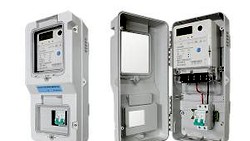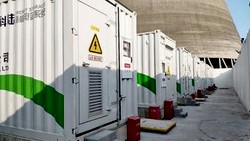Utilities worldwide are currently undergoing a strategic shift towards implementing advanced metering infrastructure, also known as AMI or smart metering. This transition involves upgrading aging analog metering systems with networked, two-way digital communication technologies that enable real-time data collection and analysis.
While representing a significant capital investment, AMI promises substantial operational efficiencies and opportunities for utilities to enhance customer service and empower consumers with energy usage data. As with any major industry transformation, questions arise around workforce implications and how utilities can best prepare and support their employees through this change process.
This article aims to objectively assess the drivers behind AMI adoption, its technical capabilities and importance, challenges in deployment, and strategies for workforce development.
Benefits of AMI Systems
The primary impetus behind AMI modernization is that automated meter reading allows utilities to more accurately collect customer usage data on a schedule that fits their business needs, such as hourly or even 15-minute intervals. This high granularity of consumption information brings several benefits. Firstly, it enables utilities to better understand load profiles and potential issues like power outages, congestion or equipment failures. Secondly, near real-time data opens up possibilities for new time-varying rate designs and demand response programs that incentivize customers to shift heavy appliance usage to off-peak hours. Thirdly, utilities reduce the labor costs associated with manual meter reading, estimated bills, trouble call outs, and other field services through remote connectivity.
A comprehensive 2017 study by the US Department of Energy, involving fifteen AMI case studies, found average annual savings ranged between $60-$163 per meter when accounting for reduced operating costs and opportunities for new revenue streams. Moreover, studies show higher customer satisfaction due to increased billing accuracy, outage notifications, and online account access.
On the environmental front, optimized grid operations facilitated by AMI can reduce peak demand by an estimated 1-4% through flattening the daily load curve. Over time, these quantitative benefits translate to lower energy costs and improved reliability for ratepayers as well as strategic advantages for utilities operating in an increasingly digitized sector.

(credit Ivy2)
Technical Overview of AMI Systems
A typical AMI configuration involves smart electric and/or gas meters at customer premises that collect usage measurements, which are transmitted via powerline or wirelessly through a communications network on a set schedule. The network frequently consists of cellular, radio frequency, power line carrier, or other fixed infrastructure to utility data collection points. From there, meter data is aggregated and transmitted to the utility's headend system for processing, storing, and analyzing consumption trends.
AMI systems leverage advanced metering technologies like automated meter reading (AMR) functionality, two-way communications allowing for remote connect/disconnect capabilities, outage detection, and prepayment programs. Meters themselves range from basic register reads to more sophisticated models with integrated modules for power quality monitoring, tamper detection, and supporting energy management or home area networks. Communication media possibilities span private wide-area networks using utility-owned infrastructure to public networks through cellular providers. Overall system architecture must consider factors like geography, population density, lifecycle costs, cybersecurity needs, and integration with existing backend utility systems.
Challenges in Deploying AMI
While the case for AMI modernization is clear, successfully implementing new metering infrastructure also presents challenges utilities are actively navigating. Foremost is the upfront capital expense of AMI deployments, typically estimated between $200-$400 per meter depending on the scale and specific technologies used. Given utilities have hundreds of thousands to millions of customer endpoints, full network builds represent multimillion to billion dollar projects requiring careful planning of budgets, financing, and multi-year deployment schedules.
Secondly, migrating from legacy systems to new operational processes, data management systems, and customer interfaces requires extensive IT integration work and change management. Building employee skills to utilize the additional AMI-enabled analytics capabilities also takes time and resources. Cybersecurity of increasingly connected infrastructure must also be rigorously designed and continually improved to protect customer data and system integrity from bad actors.
Despite best efforts, technical issues can still arise during large-scale AMI rollouts that impact customer experience and expectations. Communication issues, meter performance problems, integration errors, and other glitches have occurred, though proactive system testing aims to minimize these. Addressing public misperceptions around wireless network safety remains ongoing as well. Overall, utilities emphasize that AMI brings long term rewards, but full realization of benefits may take 5-10 years as the transition stabilizes.
Workforce Strategies and Evolving Roles
While AMI deployments may reduce some operational meter reading requirements over time, utilities stress that technology also creates new types of jobs and evolves existing roles. An important priority is reskilling and training employees throughout this digital transition to ensure workforce readiness. Internal task forces support identifying emerging skill needs, developing training curricula, and career counseling services.
Apprenticeships, technical certifications, and on-the-job mentoring help build applied competence in areas like data analytics, cybersecurity fundamentals, system integration, and customer interfacing with web portals or smart home technologies.
Utilities also stress the continued importance of field service roles to support advanced meter network health and facilitate customer engagement. AMI deployment experiences show new types of field technicians emerge focused on device installation, troubleshooting communication issues, and addressing customer questions.
System operators and regional supervisors take on expanded responsibilities in command centers to monitor network performance, detect anomalous behaviors, and coordinate maintenance or outage responses informed by high granularity usage data.
Overall, a hallmark of utilities' workforce strategies emphasizes the value of a blended team with both technical digital skills alongside traditional utility expertise. Maintaining career ladders and flexible reassignments allows movement between roles adapting to changing operational needs over AMI infrastructures' decades-long lifespan.
With proactive support, surveys show many legacy employees have embraced new technologies as an exciting journey rather than disruption. This collaborative approach helps ensure utility staff feel empowered partners in successfully delivering next generation energy services.
Takeaway
AMI modernization represents a strategic necessity for utilities seeking to leverage 21st century data and connectivity for efficiency, sustainability and customer service benefits. While a substantial multi-year endeavor, collaborative workforce strategies can help align people, processes and technologies achieving this industry evolution.
By focusing on reskilling, career development, and an inclusive digital transformation mindset, utilities aim to empower employees adapting to changing job demands. With continued innovation and cooperation across sectors, the future remains optimistic that AMI will strengthen the grid, empower customers and support a thriving workforce all working together to power society.
If you have any inquiries or need further information about our smart meters or AMI system solutions, please do not hesitate to reach out to us. We are here to assist you and welcome your valuable thoughts and comments.
Until then, keep shining bright like a solar panel on a sunny day!






All comments are moderated before being published. Inappropriate or off-topic comments may not be approved.